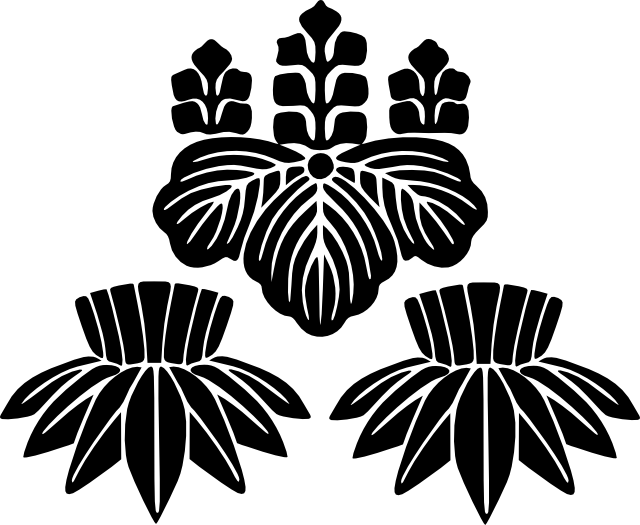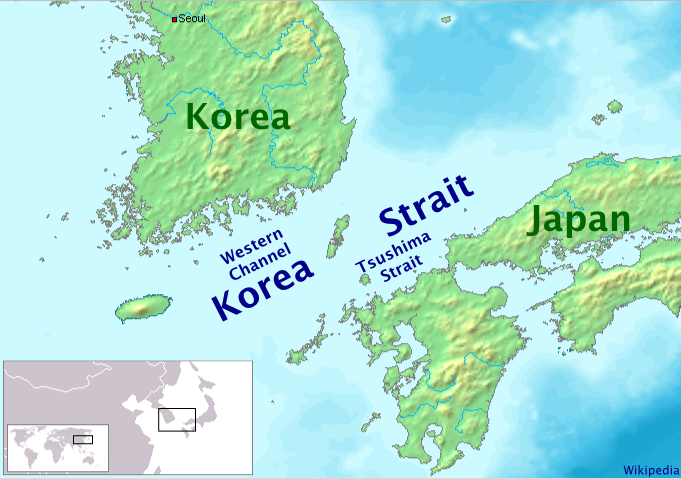|
Kikuchi Takefusa
was the 10th head of the Kikuchi clan of Higo Province and gained fame for himself and his clan during the defense of Japan during both Mongol invasions of Japan. Background and family "Kikuchi Jirō Takefusa" was son of the 9th head of the clan, Kikuchi Takayasu (菊池 隆泰); Jirō (次郎) means "second son". His mother whose name is unknown was from the equally famous Ōtomo clan and a great-granddaughter of Minamoto no Yoritomo through his illegitimate son. Takefusa became head of the clan after his father since his elder brother had died young. His younger brother Aritaka was adopted by their retainers, the Akahoshi clan. C3321 "菊池系図" First Mongol Invasion (1274) During the first Mongol invasion at the Battle of Bun'ei he fought with his younger brother Aritaka and they were both awarded by the Emperor. Takefusa shot a Mongol general in the face with a signed arrow, precipitating the recall of the first Mongol invasion. Bun'ei is really the name of a campaign ... [...More Info...] [...Related Items...] OR: [Wikipedia] [Google] [Baidu] |
Fukuoka City
is the sixth-largest city in Japan, the second-largest port city after Yokohama, and the capital city of Fukuoka Prefecture, Japan. The city is built along the shores of Hakata Bay, and has been a center of international commerce since ancient times. The area has long been considered the gateway to the country, as it is the nearest point among Japan's main islands to the Asian mainland. Although humans occupied the area since the Jomon period, some of the earliest settlers of the Yayoi period arrived in the Fukuoka area. The city rose to prominence during the Yamato period. Because of the cross-cultural exposure, and the relatively great distance from the social and political centers of Kyoto, Osaka, and later, Edo (Tokyo), Fukuoka gained a distinctive local culture and dialect that has persisted to the present. Fukuoka is the most populous city on Kyūshū island, followed by Kitakyushu. It is the largest city and metropolitan area west of Keihanshin. The city was desig ... [...More Info...] [...Related Items...] OR: [Wikipedia] [Google] [Baidu] |
Saigō Takamori
was a Japanese samurai and nobleman. He was one of the most influential samurai in Japanese history and one of the three great nobles who led the Meiji Restoration. Living during the late Edo and early Meiji periods, he later led the Satsuma Rebellion against the Meiji government. Historian Ivan Morris described him as "the quintessential hero of modern Japanese history". Early life Saigō Kokichi (西郷 小吉) was born in Kajiya, Kagoshima, Satsuma Domain, the eldest son of samurai squire (''koshōkumi'') Saigō Kichibē and his wife Masa. He had six siblings and his younger brother was Marshal-Admiral Marquis Saigō Jūdō. His childhood name was Kokichi and he received the given name Takamori in adulthood. He wrote poetry under the name Saigō Nanshū (西郷 南洲). Shogun Tokugawa Yoshinobu resigned, returning power to the Emperor in what came to be known as the Meiji Restoration. However, Saigō was one of the most vocal and vehement opponents to the negotiated ... [...More Info...] [...Related Items...] OR: [Wikipedia] [Google] [Baidu] |
Sengoku Period
The was a period in History of Japan, Japanese history of near-constant civil war and social upheaval from 1467 to 1615. The Sengoku period was initiated by the Ōnin War in 1467 which collapsed the Feudalism, feudal system of Japan under the Ashikaga shogunate. Various samurai warlords and Japanese clans, clans fought for control over Japan in the power vacuum, while the emerged to fight against samurai rule. The Nanban trade, arrival of Europeans in 1543 introduced the arquebus into Japanese warfare, and Japan ended its status as a Tributary system of China, tributary state of China in 1549. Oda Nobunaga dissolved the Ashikaga shogunate in 1573 and launched a war of political unification by force, including the Ishiyama Hongan-ji War, until his death in the Honnō-ji Incident in 1582. Nobunaga's successor Toyotomi Hideyoshi completed his campaign to unify Japan and consolidated his rule with numerous influential reforms. Hideyoshi launched the Japanese invasions of Korea (159 ... [...More Info...] [...Related Items...] OR: [Wikipedia] [Google] [Baidu] |
Hayashi Narinaga
was a samurai during the Sengoku period, retainer of the Mōri clan and was a ji-samurai (''koku-jin-ryōshū'') of southern Bingo Province. He held many positions including ''karō'' (clan elder) serving Mōri Motonari and his father Mōri Hiromoto in diplomatic missions with Toyotomi Hideyoshi. Narinaga was a ''bugyō'' under Mōri Terumoto. From Hideyoshi he received the rank of Hizen-no-kami (肥前守). He served as diplomat between the Mōri and Hideyoshi. Later he was bestowed the 5th court rank, junior grade '' Ju go-i-no-ge'' (従五位). The character "nari, 就" came from his lord Mōri Motonari and "naga, 長" from his father Kikuchi Takenaga. Narinaga was one of the few to live through all the Sengoku period. Early life and background Hayashi Narinaga was born 1517 in Doi (土), Kawajiri (川尻), Bingo Province, today part of Mihara City, Hiroshima Prefecture. Narinaga's childhood name is unknown. His birth year is only known from his recorded age at death which ... [...More Info...] [...Related Items...] OR: [Wikipedia] [Google] [Baidu] |
Kikuchi Taketoki
The of Higo Province was a powerful daimyō family of Higo Province, Higo, Kyūshū. The lineage was renowned for valiant service in defense of the emperor and against foreign invaders. They initially distinguished themselves during the Jurchen people, Jürchen invasion of northern Kyūshū in 1019 and rose to prominence during the Mongol invasions of Japan when the heroism of Kikuchi Takefusa helped drive back the enemy. The Kikuchi was active in the Kenmu Restoration (1333-1336), an attempt by the emperor Go-Daigo to reassert imperial authority against the Kamakura shogunate. The Kikuchi clan claimed descent from the Fujiwara clan. It is questioned as a Korean Baekje origin Buddha statue found in their origin site is the same type of Buddha statue belonged to Kikuchi clan, and as the statue was made before Fujiwara clan existed, it's believed that Kikuchi clan was maybe older than Fujiwara clan. Japanese genealogist, Suzuki Matoshi claimed the clan was from the Korean kingdom ... [...More Info...] [...Related Items...] OR: [Wikipedia] [Google] [Baidu] |
Kikuchi Shrine
is a Shinto shrine in Kikuchi, Kumamoto Prefecture, in which Kikuchi Taketoki (菊池武時, 1292 – April 27, 1333), Kikuchi Takeshige (菊池武重, 1307?-1338?) and Kikuchi Takemitsu (菊池武光, – 1373) are enshrined. It is one of the Fifteen Shrines of the Kenmu Restoration. Another Kikuchi Shrine (Fukuoka) *Kikuchi Takemitsu is also enshrined in a Kikuchi shrine at 7-10-1, Nanakuma, Johnan-ku, Fukuoka where he died at war. History of the shrine *With the suggestion of Nagaoka Masami, Emperor Meiji ordered in 1868, the enshrinement of Kikuchi Taketoki, who worked for the emperors, and a shrine was built on the site of the old Kikuchi castle in Kikuchi City. Kikuchi Taketoki was enshrined on April 28, 1870. The shrine is classified as a Bekkaku Kanpeisha (shrines for those with distinguished services to the state). In March 1923, Kikuchi Takeshige and Kikuchi Takemitsu were also enshrined at the same location. In September 1952, the shrine was made a Religiou ... [...More Info...] [...Related Items...] OR: [Wikipedia] [Google] [Baidu] |
Tsushima Straits
or Eastern Channel (동수로 Dongsuro) is a channel of the Korea Strait, which lies between Korea and Japan, connecting the Sea of Japan, the Yellow Sea, and the East China Sea. The strait is the channel to the east and southeast of Tsushima Island, with the Japanese islands of Honshu to the east and northeast, and Kyushu and the Gotō Islands to the south and southeast. It is narrowest south-east of Shimono-shima, the south end of Tsushima Island proper, constricted there by nearby Iki Island, which lies wholly in the strait near the tip of Honshu. South of that point Japan's Inland Sea mingles its waters through the narrow Kanmon Strait between Honshu and Kyushu, with those of the Eastern Channel, making for some of the busiest sea lanes in the world. The Strait was the site of the decisive naval battle in the Russo-Japanese War, the Battle of Tsushima, between the Japanese and Russian navies in 1905; in which the Russian fleet was virtually destroyed.100 Battles, ''Decisi ... [...More Info...] [...Related Items...] OR: [Wikipedia] [Google] [Baidu] |
Kublai Khan
Kublai ; Mongolian script: ; (23 September 1215 – 18 February 1294), also known by his temple name as the Emperor Shizu of Yuan and his regnal name Setsen Khan, was the founder of the Yuan dynasty of China and the fifth khagan-emperor of the Mongol Empire from 1260 to 1294, although after the division of the empire this was a nominal position. He proclaimed the empire's dynastic name "Great Yuan" in 1271, and ruled Yuan China until his death in 1294. Kublai was the second son of Tolui by his chief wife Sorghaghtani Beki, and a grandson of Genghis Khan. He was almost 12 when Genghis Khan died in 1227. He had succeeded his older brother Möngke as Khagan in 1260, but had to defeat his younger brother Ariq Böke in the Toluid Civil War lasting until 1264. This episode marked the beginning of the fragmentation of the empire. Kublai's real power was limited to the Yuan Empire, even though as Khagan he still had influence in the Ilkhanate and, to a significantly lesser degree, i ... [...More Info...] [...Related Items...] OR: [Wikipedia] [Google] [Baidu] |



